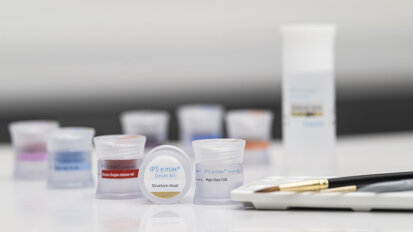Given the frequent prescription of antibiotics by dentists to manage infection, keeping abreast of global trends in antibiotic use is crucial to identifying potential overprescription and misuse. Understanding these patterns is also vital for improving dental practice and reducing the risk of antibiotic resistance. Dental Tribune International spoke with researchers Drs Fatemeh Soleymani and Carlos Pérez-Albacete Martínez with the Catholic University of Murcia in Spain about their recent study on worldwide antibiotic use in dental practice.
Dr Soleymani, your study emphasises the importance of adherence to guidelines for antibiotic prescription in dental practice. What specific strategies or tools would you recommend for dental clinicians to ensure guideline compliance and minimise inappropriate antibiotic use in day-to-day practice?
During our scoping review, we found that regular educational sessions on updated guidelines significantly reduced the misuse and overprescription of antibiotics in dental settings. Implementing a national or even international initiative could be crucial in keeping dentists, dental students and dental staff informed about the latest guidelines and ensuring adherence.
Additionally, displaying these guidelines prominently within dental practices can help clinicians reference them easily when assessing patient cases. Another effective strategy is to meticulously record all antibiotics, as well as other medications, prescribed. This practice allows the dental team to periodically review and evaluate their prescriptions, every six months for instance, to ensure that they align with current guidelines and to make necessary improvements. This approach is vital for addressing the critical issue of antibiotic resistance in this decade.
Community-based teaching is also important. Sometimes, dentists, and even physicians, feel compelled to prescribe antibiotics to reassure patients. This is a topic we will briefly address in a forthcoming article.
Dr Pérez-Albacete Martínez, given the findings that a significant portion of antibiotic prescriptions in dental practices are not aligned with guidelines, are there any educational initiatives or training programmes that you recommend for dental students and practising clinicians to improve antibiotic stewardship?
We believe that it is becoming clearer to the scientific community that antibiotic resistance could become a serious problem within a few years. Thanks to FDI World Dental Federation and national associations, information is being disseminated to clinicians about this issue.
Also, universities have a great responsibility in training future dentists in this regard, and together with international and national authorities, specific training programmes should be developed to provide updates on current clinical guidelines for responsible antibiotic prescribing. Additionally, funds should be allocated for the creation of more online and in-person seminars, continuing education courses and even the development of free apps for helping clinicians make responsible decisions when prescribing antibiotics.
Like I mentioned, there is already increasing awareness of this, but we must put all our efforts into creating more training programmes to reach all clinicians and future dentists, thereby reducing the future impact of antibiotic resistance in the treatment of our patients.
Dr Soleymani, your paper highlights changes in antibiotic prescribing trends during the COVID-19 pandemic. How can dental practitioners balance the need for infection control with the goal of reducing antibiotic overuse should there ever be a similar scenario in future?
Like we mentioned in our article, during the COVID-19 pandemic, dental antibiotic prescriptions increased in most countries with available data. This was due to lockdowns, reduced access to regular dental treatments and the public’s fear of contracting SARS‑CoV‑2 in dental settings. Consequently, there was a rise in dental abscesses and urgent dental treatments requiring antibiotic coverage. Protocols at the time recommended restricting dental treatments to emergencies and delaying routine care. However, we know that neglecting a simple carious tooth can quickly lead to abscess.
In addition to increased antibiotic prescription by dentists, there was a significant issue with self-medication. Many people, fearing SARS‑CoV‑2 transmission in dental offices, avoided seeking professional care and resorted to over-the-counter antibiotics in countries where such medications are readily available without a prescription.
To address this in a future scenario, teledentistry could be a valuable solution. By examining patients remotely, we can plan visits to avoid crowding in dental offices, reassure patients about the preventive measures in place and limit in-person visits to essential treatments only. Additionally, teledentistry can assist dentists in deprived areas by providing access to advice from other dental professionals and the latest guidelines through peer support. Implementing online courses to raise awareness in this field globally also seems necessary. This approach can help control antibiotic prescription by reducing unnecessary in-person visits and ensuring that antibiotics are prescribed only when absolutely necessary.
Drs Pérez-Albacete Martínez and Soleymani, do you have any other ongoing research you would like our readers to know about?
We are close to publishing two new articles reporting the results of our double-blinded randomised clinical trial addressing one of the most common reasons for antibiotic prescription in dentistry. Our findings demonstrate that antibiotics do not alter the clinical and laboratory features of treatment in healthy individuals. In these articles, we will discuss the importance of publication-based education as a crucial strategy for reducing antibiotic usage and prescription in dentistry.
Topics:
Tags:
MURCIA, Spain: The World Health Organization annually publishes data on defined daily dose per 1,000 inhabitants per day (DID) for antibiotics, allowing ...
LEIPZIG, Germany: There are conflicting opinions and evidence on antibiotic use before and after implant surgery and in peri-implantitis treatment. Given ...
SHEFFIELD, UK: Infective endocarditis (IE) is a potentially life-threatening heart infection that is caused by dental bacteria in around a third of cases. A...
PORTOVIEJO, Ecuador: The application of the concept of osseointegration revolutionised the treatment of edentulous patients. However, as applications ...
Live webinar
Mon. 12 January 2026
9:00 am EST (New York)
Prof. Judith Jones D.D.S; M.P.H., Prof. Kakuhiro Fukai D.D.S., Ph.D, Dr. Bathsheba (Bethy) Turton
Live webinar
Wed. 14 January 2026
12:00 pm EST (New York)
Dr. Théo Laplane, Dr. Robert Gottlander DDS
Live webinar
Fri. 16 January 2026
12:00 pm EST (New York)
Live webinar
Mon. 19 January 2026
1:00 pm EST (New York)
Philipp Kopp, Michael Seeber
Live webinar
Thu. 22 January 2026
2:00 pm EST (New York)
Dr. Nicola M. Grande DDS, PhD
Live webinar
Wed. 28 January 2026
8:00 am EST (New York)
Live webinar
Wed. 28 January 2026
11:00 am EST (New York)
Prof. Dr. Jan-Frederik Güth



 Austria / Österreich
Austria / Österreich
 Bosnia and Herzegovina / Босна и Херцеговина
Bosnia and Herzegovina / Босна и Херцеговина
 Bulgaria / България
Bulgaria / България
 Croatia / Hrvatska
Croatia / Hrvatska
 Czech Republic & Slovakia / Česká republika & Slovensko
Czech Republic & Slovakia / Česká republika & Slovensko
 France / France
France / France
 Germany / Deutschland
Germany / Deutschland
 Greece / ΕΛΛΑΔΑ
Greece / ΕΛΛΑΔΑ
 Hungary / Hungary
Hungary / Hungary
 Italy / Italia
Italy / Italia
 Netherlands / Nederland
Netherlands / Nederland
 Nordic / Nordic
Nordic / Nordic
 Poland / Polska
Poland / Polska
 Portugal / Portugal
Portugal / Portugal
 Romania & Moldova / România & Moldova
Romania & Moldova / România & Moldova
 Slovenia / Slovenija
Slovenia / Slovenija
 Serbia & Montenegro / Србија и Црна Гора
Serbia & Montenegro / Србија и Црна Гора
 Spain / España
Spain / España
 Switzerland / Schweiz
Switzerland / Schweiz
 Turkey / Türkiye
Turkey / Türkiye
 UK & Ireland / UK & Ireland
UK & Ireland / UK & Ireland
 Brazil / Brasil
Brazil / Brasil
 Canada / Canada
Canada / Canada
 Latin America / Latinoamérica
Latin America / Latinoamérica
 USA / USA
USA / USA
 China / 中国
China / 中国
 India / भारत गणराज्य
India / भारत गणराज्य
 Pakistan / Pākistān
Pakistan / Pākistān
 Vietnam / Việt Nam
Vietnam / Việt Nam
 ASEAN / ASEAN
ASEAN / ASEAN
 Israel / מְדִינַת יִשְׂרָאֵל
Israel / מְדִינַת יִשְׂרָאֵל
 Algeria, Morocco & Tunisia / الجزائر والمغرب وتونس
Algeria, Morocco & Tunisia / الجزائر والمغرب وتونس
 Middle East / Middle East
Middle East / Middle East










































To post a reply please login or register